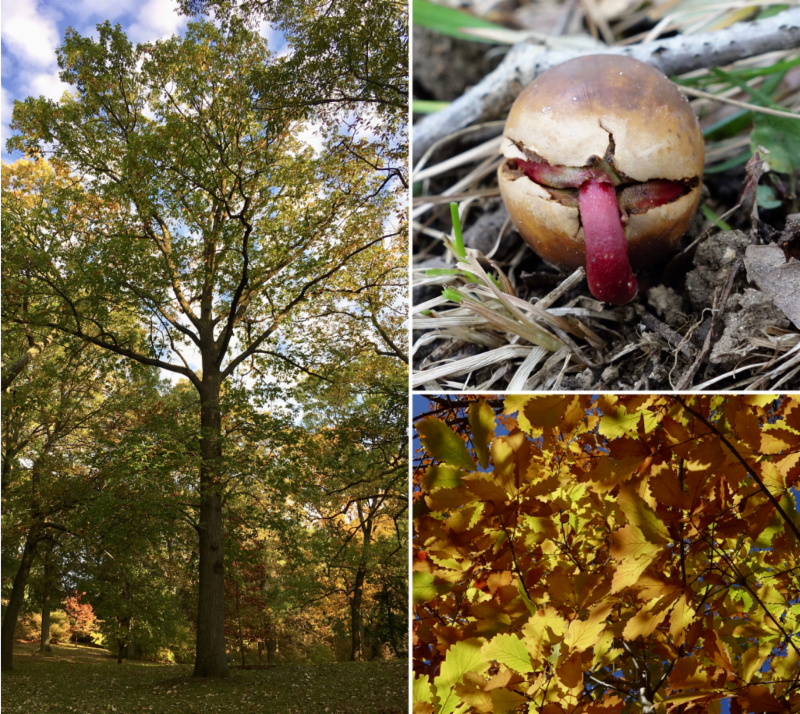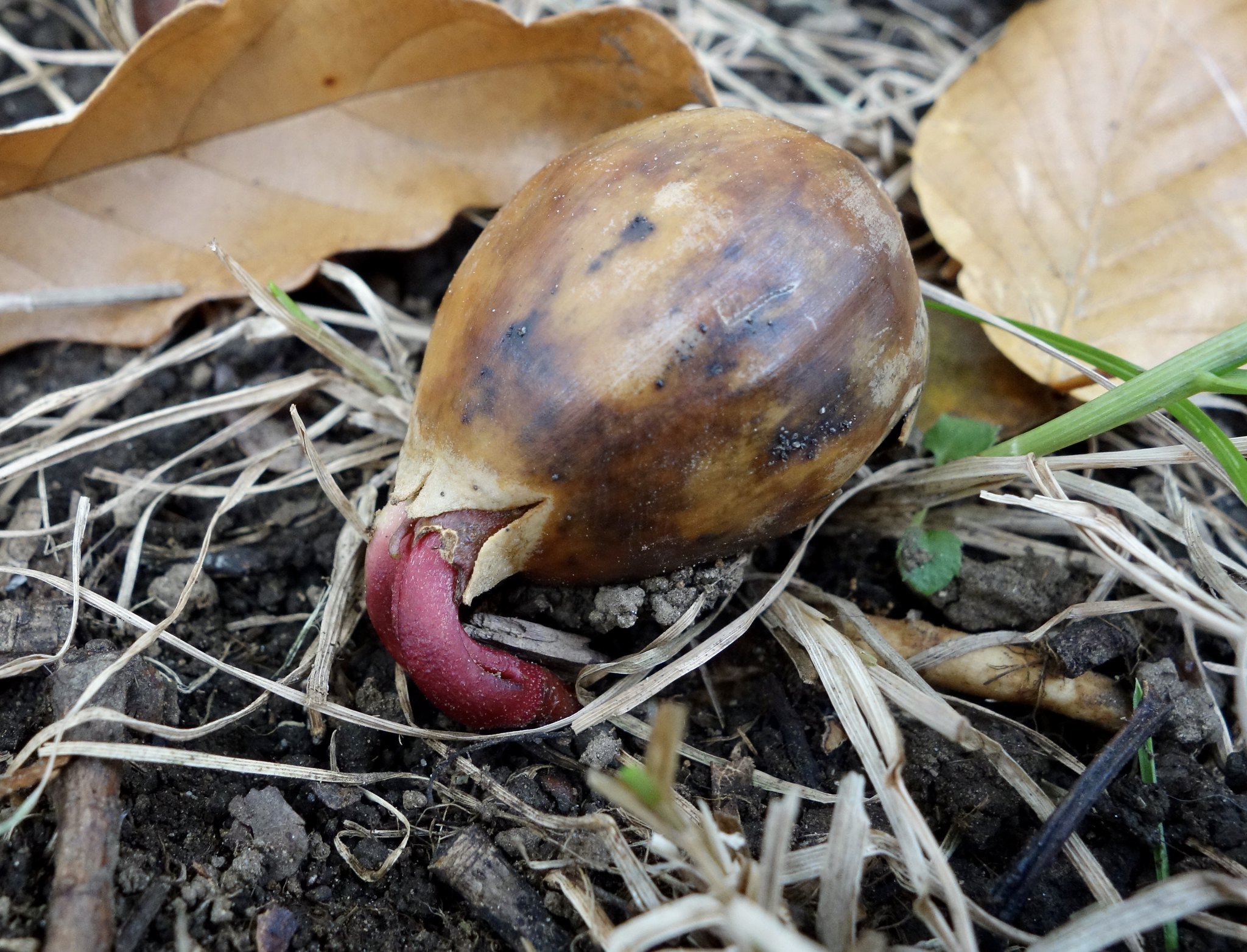Over the past few weeks, I have been repeatedly drawn to the North American oak collection on the southwest flank of Bussey Hill. There is something truly grand about this cathedral-like space, with soaring trunks and arched canopies meeting to create a magnificent vaulted ceiling overhead. You enter this architectural and botanical space and are set apart from the rest of the Arnold Arboretum. Like all great architecture, you feel the effect of the space on the soul.
Unlike human architecture, botanical architecture literally grows and transforms itself over time. The connection between the majestic trees in the oak collection and their progenitor acorns was especially apparent this year under the centenarian mountain chestnut oaks, Quercus montana (e.g. 16352*H, left image) collected in the 1870s by Henry Winthrop Sargent, a cousin to Charles Sprague Sargent, first director of the Arnold Arboretum.
The seeds of most temperate trees are dormant when shed, waiting until spring when environmental signals call forth the first root (the radicle) to burrow into the soil, anchor the seedling, and provide key access to water and mineral nutrients. Not so the mountain chestnut oak which, like many other species in the white oak section of the genus, germinates almost immediately upon descent from the canopy. A bright red radicle emerges from the acorn (upper right), penetrates the soil, and holds the ground until spring, when the shoot system will finally emerge from the acorn and begin its ascent towards the sun. An adaptive strategy in the constant battle to survive, perhaps? More, next time.

Lower right image, last year’s intense fall colors on a young (2006 accesssion) Quercus montana (190-2006*A).
